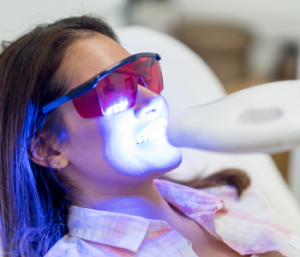The hunt for whiter teeth has evolved over centuries, from ancient remedies to modern innovations, the history of teeth whitening strips is a fascinating journey through time. Here, we’ll explore the origins, milestones, and advancements that have shaped the teeth whitening industry as we know it today.
Ancient Beginnings
The desire for whiter teeth is not a recent phenomenon. As far back as ancient Egypt, people were using primitive methods to whiten their teeth. A mixture of ground pumice stone and vinegar was used as a teeth-cleaning paste, effectively removing stains and debris. In ancient Rome, urine was employed as a bleaching agent, although the science behind it was rudimentary at best.
The Renaissance Era
As knowledge of chemistry and medicine expanded during the Renaissance, so did the methods for teeth whitening. Barbers, who often doubled as dentists at the time, started using various abrasive substances like alum and salt to scrub away stains. The process was uncomfortable, and the results were inconsistent, but it marked a step forward in dental hygiene.
The 18th Century
The 18th century saw a significant development in teeth whitening with the discovery of hydrogen peroxide. Dentists began using hydrogen peroxide to bleach teeth, although this process was time-consuming and not without side effects, such as gum irritation and tooth sensitivity.
The 20th Century
The teeth whitening took a leap forward in the 20th century with the development of carbamide peroxide and hydrogen peroxide gels. These gels, when applied to the teeth, would break down into oxygen molecules that penetrated the enamel and whiten the teeth. However, these early methods were still performed primarily in dental offices and required time-consuming appointments.
The Rise of Over-the-Counter Products
The 1980s marked a turning point in the history of teeth whitening. Dentists started to develop and market take-home teeth whitening kits that included custom-fitted trays and whitening gel. These products allowed people to whiten their teeth at home, but they were relatively expensive and required a dentist’s involvement.
Introduction of Teeth Whitening Strips
The true game-changer in the quest for whiter teeth came in the early 2000s with the introduction of teeth whitening strips. Crest, a well-known oral care brand, launched its Whitestrips in 2001. These strips featured a thin, flexible material coated with a whitening gel containing hydrogen peroxide. They were designed to be easy to apply and were worn for just 30 minutes a day.
Crest Whitestrips revolutionized teeth whitening by making it more convenient and affordable for the average consumer. No longer did people need to visit a dentist or deal with messy trays. Instead, they could simply adhere the strips to their teeth and continue with their daily activities.
Advancements in Teeth Whitening Strips
Since their inception, teeth whitening strips have continued to evolve. Companies have developed various formulations to cater to different needs and preferences. Some strips promise quick results in as little as one hour, while others are designed for overnight use. Additionally, advancements in adhesive technology have made the strips more comfortable and less likely to slip off.
The Science Behind Teeth Whitening Strips
Teeth whitening strips work by utilizing peroxide-based chemicals to break down stains on the surface of the teeth. Hydrogen peroxide or carbamide peroxide, the active ingredients in these strips, release oxygen ions when they come into contact with the teeth. These ions penetrate the enamel and target the pigment molecules responsible for staining, breaking them down into smaller, less visible particles. Over time, this process leads to whiter teeth.
Safety Concerns and Considerations
While teeth whitening strips are generally safe when used as directed, there are some considerations to keep in mind. Overuse or misuse of these products can lead to tooth sensitivity and gum irritation. It’s crucial to follow the instructions provided and consult with a dentist if you have any concerns about using teeth whitening strips, especially if you have dental restorations like crowns or veneers.
The Future of Teeth Whitening
As technology continues to advance, the future of teeth whitening is likely to bring even more convenient and effective methods. Researchers are exploring new materials and techniques to further improve the results of teeth whitening, potentially reducing the risk of sensitivity and making the process even more accessible to a broader audience.
In conclusion, the history of teeth whitening strips is a story of human innovation and the pursuit of a brighter, more confident smile. From ancient remedies to modern, easy-to-use strips, our fascination with white teeth has driven progress in dental care. As technology continues to evolve, we can expect teeth whitening to become more accessible, effective, and comfortable for people of all ages. Whether you opt for traditional methods or the latest innovations, the desire for a radiant smile is a timeless aspect of human beauty.



